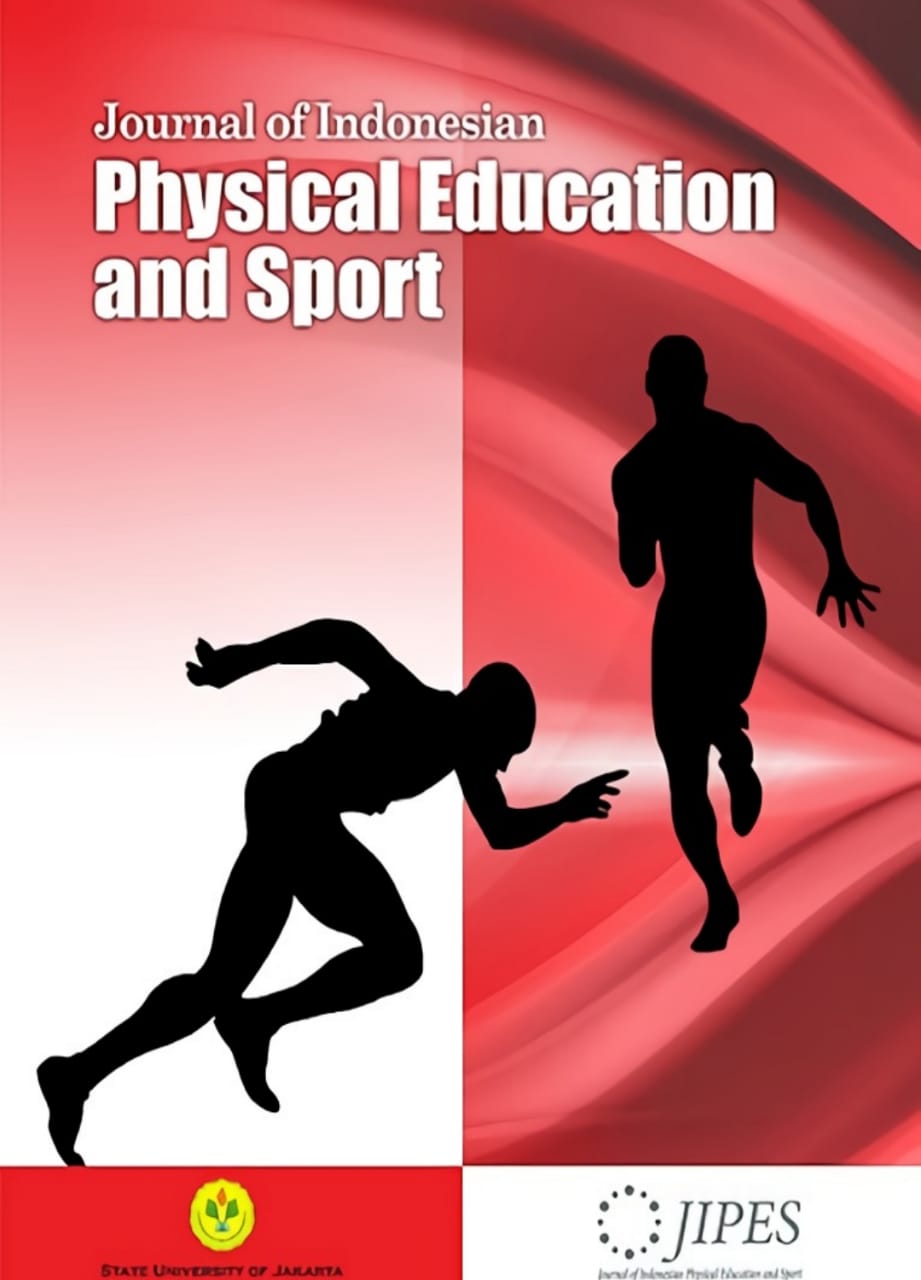Cardiorespitory Exercise Model Based Waste Utilization for Elementary School Students
DOI:
https://doi.org/10.21009/JIPES.081.03Keywords:
Physical Education, Cardiorespitory, Elementary SchoolAbstract
The goal to be achieved from this development research is to produce products in the form of waste utilization model books for elementary school students so as to provide guidance for physical education teachers in providing fun, creative and meaningful learning. This study used research and develompent (RnD) method from barg and gall consisting of ten steps, the subjects used in this study were students of SDN Tanjungsari and SDN Blanakan with a total of 68 subjects. The design of the experiment research is one group pretest posttest design. The stages of this study are: introduction research, expert test, large group test small group test and effectiveness test. The effectiveness test in this study used the Harvard Step Test. The results of the model effectiveness test are known that the waste utilization model for physical fitness there is an increase, the pretest obtained an average figure of 33.57 and posttest obtained an average figure of 36.63. From the data can be concluded there is an increase after treatment. The results of the effectiveness test showed the results of t-count = 7818, df = 62 and p-value = 0.00 < 0.05, meaning that the physical fitness exercise model for elementary school students before and after treatment there was a significant difference. It can be concluded that the waste utilization model for physical fitness of elementary school students, effective and able to improve physical fitness
References
Iegrist, M., Lammel, C., Haller, B., Christle, J., &Halle, M. (2013). Effects of a physical education program on physical activity, fitness, and health in children: The JuvenTUM project. Scandinavian Journal of Medicine and Science in Sports, 23(3), 323–330.
Muska, Mosston. Teaching Physical Education (USA: Sara Ashworth, 2008)
Susan. Chedzoy, Robert. Burden,"Primary school children's reflections on Physical Education lessons: An attributional analysis and possible implications for teacher action". Thingking Skills and Creativity, Vol. 4 (3), Elsevier.ltd 2009, pp. 185-193
Butler, J.M., Scianni, A., & Ada, L. Effect of Cardiorespiratory Training On Aerobic Fitness And Carryover To Activity In Children With Cerebral Palsy: A Systematic Review, 2008. hh. 97–103.
Ekelund, U., Anderssen, S. A., &Froberg, K. Independent Associations Of Physical Activity And Cardiorespiratory Fitness With Metabolic Risk Factors In Children: The European Youth Heart Study, 2007. hh. 1832–1840
O'malley, G., Ring-Dimitriou, S., Nowicka, P., Vania, A., Frelut, M., Farpour-Lambert, N., & Thivel, D. Physical Activity and Physical Fitness in Pediatric Obesity: What are the First Steps for Clinicians? Expert Conclusion from the 2016 ECOG Workshop. International Journal Of Exercise Science, 10(4), 2017. hh. 487-496
Klepper, S. E. Exercise and fitness in children with arthritis: Evidence of benefits for exercise and physical activity. Arthritis &Rheumatism, Vol 49 (3). 2003.










 </a > a
</a > a 